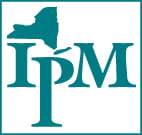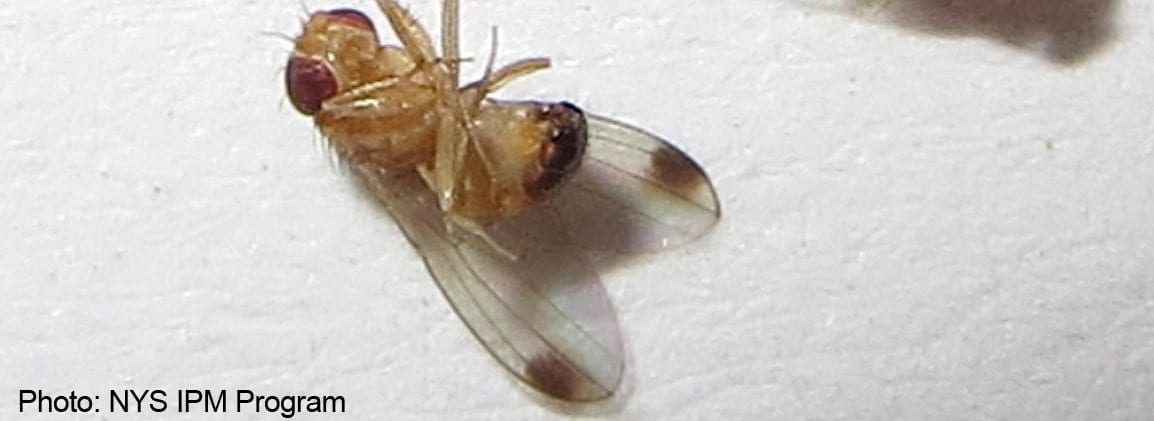On December 8th, a nation-wide team of scientists presented a webinar, organized by Dr. Hannah Burrack from NC State, on the past ten years research findings related to spotted wing drosophila (SWD) management. The entire 1.5-hour webinar recording can be viewed by anyone — you can access it on the Sustainable Spotted Wing Drosophila Management, swdmanagement.org/, webpage or watch it on YouTube, A Decade of SWD: Lessons for Management at youtu.be/Rk-e13Gov24. Some of the key takeaway messages I found most of interest are described below.
Dr. Greg Loeb from Cornell University presented on the seasonal phenology of SWD. As we’ve emphasized, and you have probably seen in your own operations, SWD doesn’t arrive in traps or orchards early in the spring. They generally show up in our region around mid-June, and populations continue to build through to harvest. Dr. Loeb presented findings from several preliminary studies looking at the best timing for the most efficacious insecticides, which show that best control comes from using the best materials early in the season (when populations are low, and you can best delay the population spike), and rotating to softer products later, closer to harvest. Remember that you can find an updated insecticide efficacy chart on the Cornell Fruit Resources SWD webpage fruit.cornell.edu/spottedwing/management/.
Dr. Phil Fanning from the University of Maine presented preliminary data on the use of a feeding stimulant – to see if adding something “tasty” to an insecticide application would encourage SWD adults to feed more, and increase the efficacy of the insecticide. Although these were found to work moderately well in the lab for some insecticides (especially acetamiprid), preliminary results show it to not be effective in the field, at this time.
Dr. Kent Daane from the University of California presented information on the potential for classical biological control (bringing natural enemies from SWD’s native range to introduce in the USA). This is, of course, a complex decision to make, since we want to be very careful not to introduce a new species that may cause problems of its own! However, native natural enemies seem to be very ineffective at controlling SWD, so classical biocontrol would be the best option, if it can be done safely. At this point, there are two candidate parasitoid wasps that have been thoroughly researched and have been shown to not cause “non-target” effects on other native flies or insects. If all goes well, they could move into the permitting stage in 2021, and be available for release in the next year or two!
Dr. Ash Sial from the University of Georgia summarized the most effective cultural control practices:
- The ideal harvest frequency has been found to be 2-day intervals, in order to maximize control while minimizing unnecessary time spent harvesting.
- Increased pruning and use of drip irrigation can make your planting less attractive to SWD.
- Mulch that creates a complete physical barrier (i.e. weed fabric or mylar) reduces SWD pupation.
- Exclusion mesh with <1mm holes has a very high initial cost, but can lead to 100% control when done well.
Dr. Cesar Rodriguez-Saona from Rutgers University discussed Attract and Kill technologies, which show potential in research trials, but still need more data before they would be ready to be implemented.
Dr. Vaughn Walton discussed Sterile Insect Technique, which is still in the field research stage, and would have a long development and regulatory process to go through before it could be available for commercial use.
Finally, I’m excited to announce that Dr. Larry Gut, from Michigan State University, will be presenting on his SWD research at our upcoming Winter Tree Fruit Conference on February 2nd! Dr. Gut specializes in tree fruit entomology, and he will be discussing a degree day model for SWD infestation that his lab has been developing, to help track more specifically the best timing for utilizing your best chemistries to control SWD, among other SWD management recommendations. I hope you’ll be able to attend!
This blog was contributed by Janet van Zoeren, tree fruit and berry IPM specialist, Lake Ontario Fruit Program, Cornell Cooperative Extension. Contect her at jev67@cornell.edu. Sign up for their newsletter and become a member of their Regional CCE Program. Find out more at CFR CCE Newsletters webpage fruit.cornell.edu/newsletters/.

